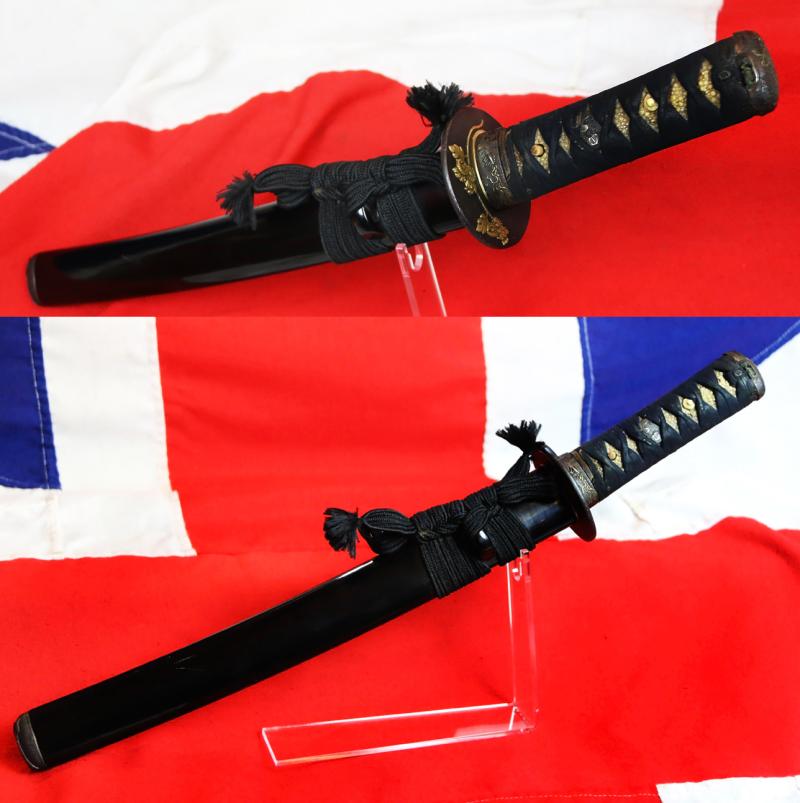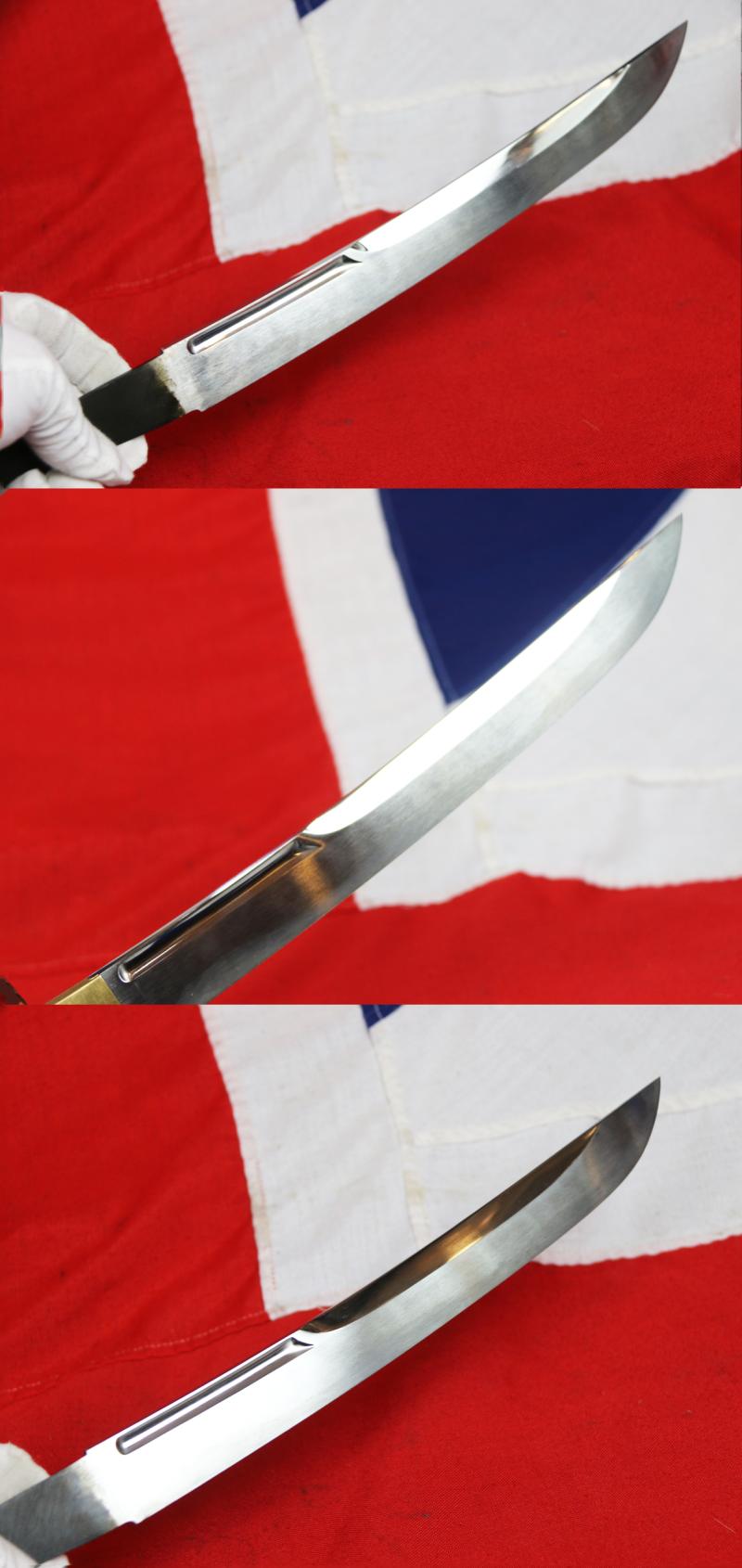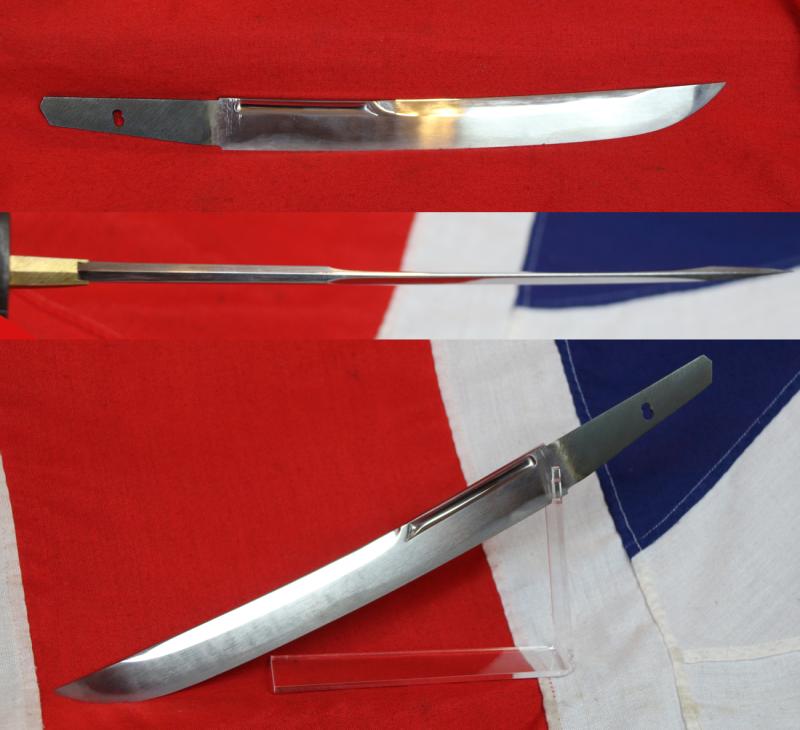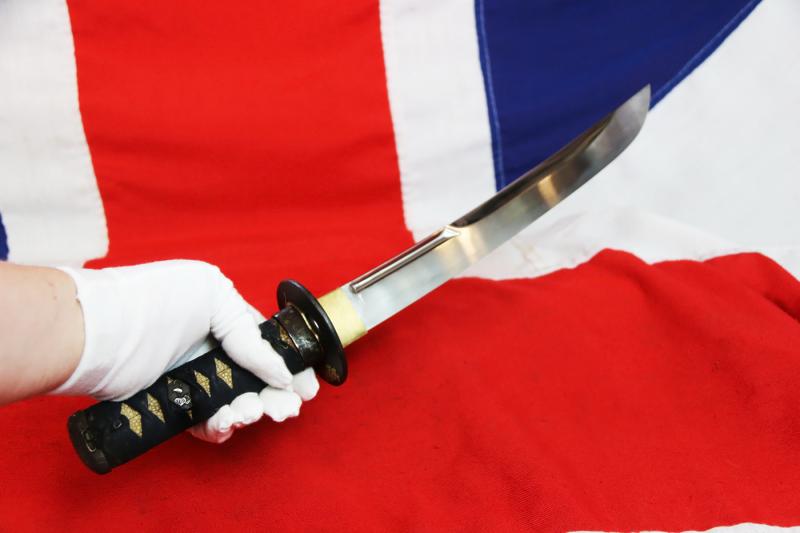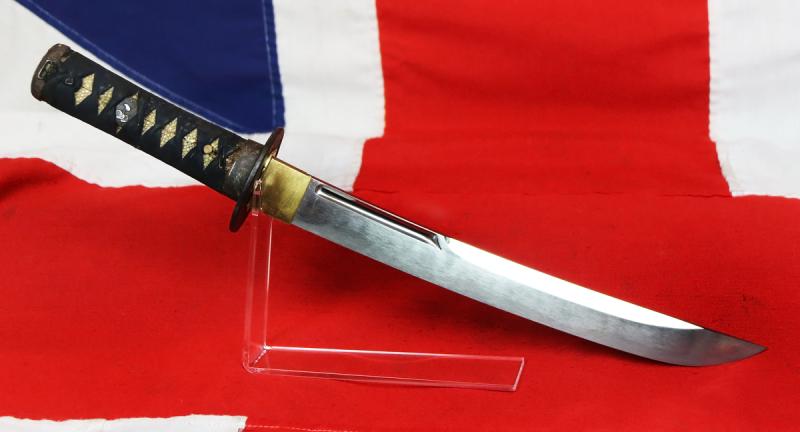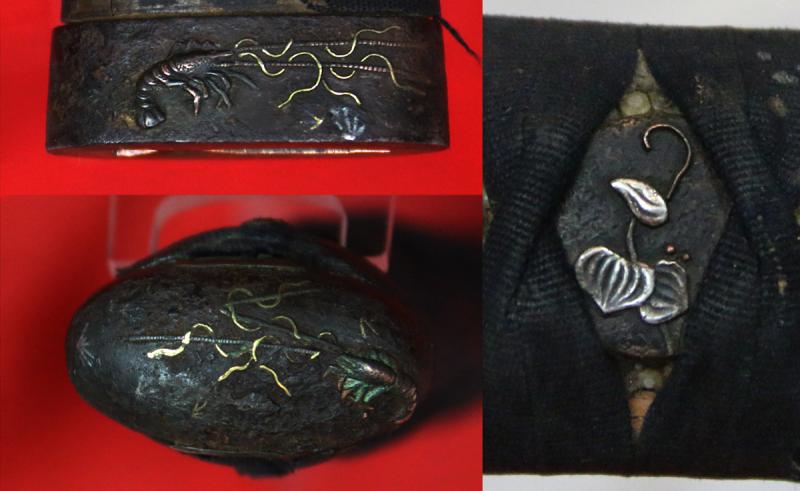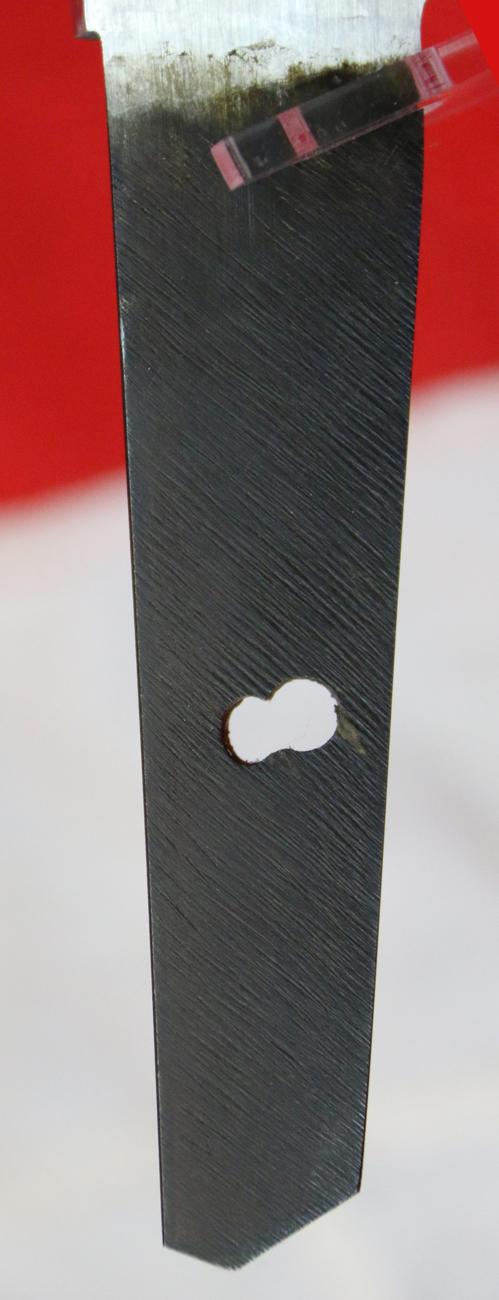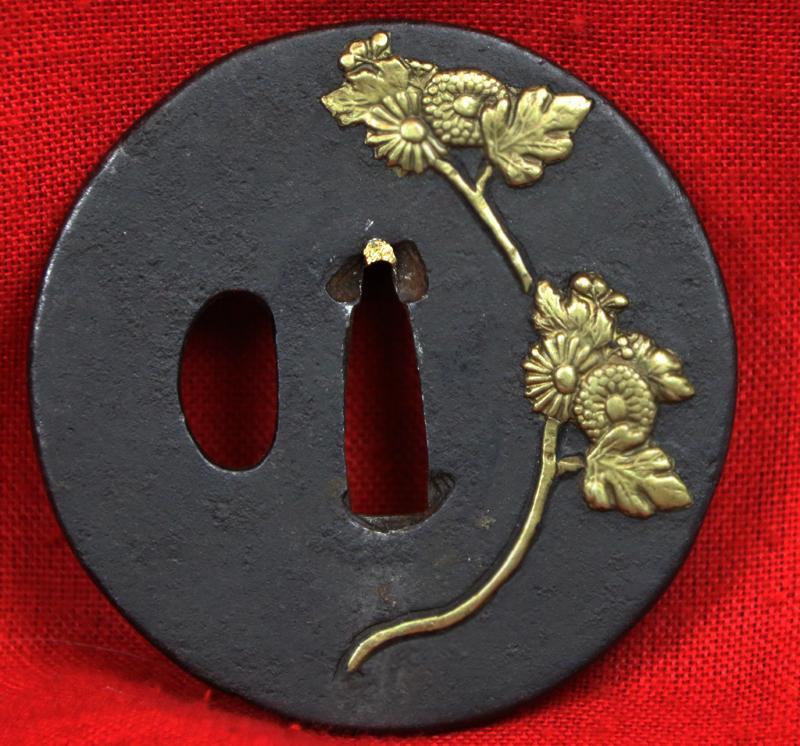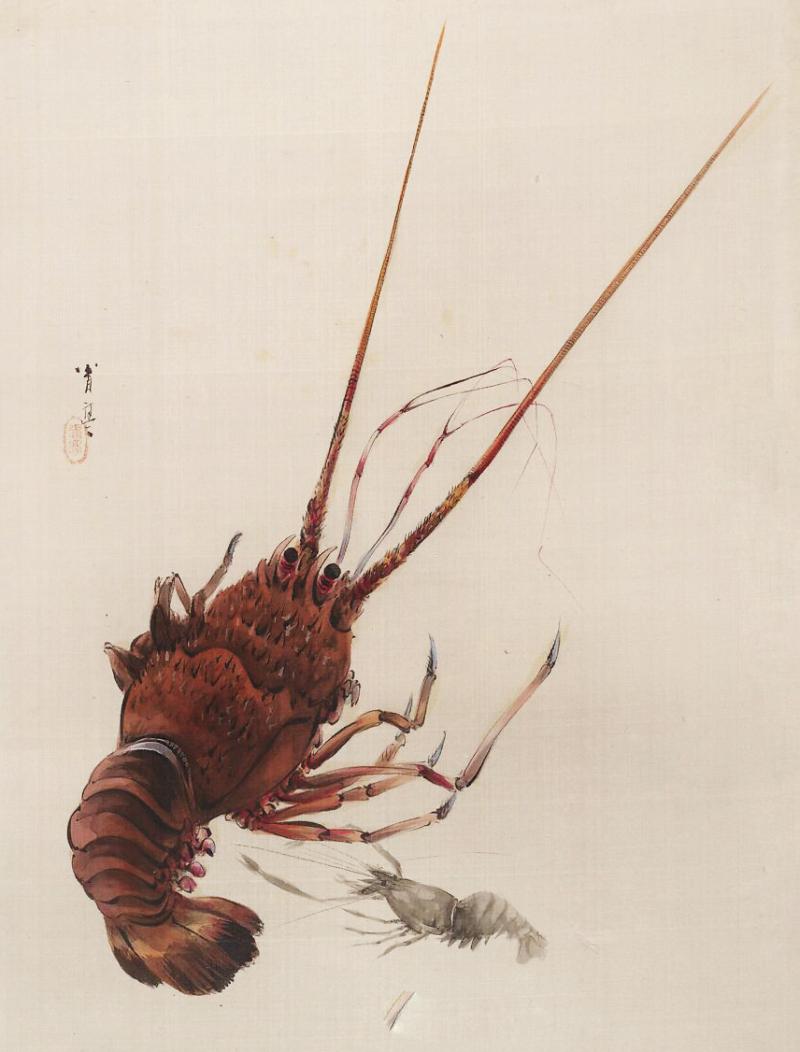A Phenomenally Inexpensive & Most Attractive, Edo Style Samurai Showa Period O-Tanto With Unokubi-Zukuri & Hi Blade, & An Original, Antique, Edo Period Tsuka With Original Tsukaito, Fuchi Kashira of Zarigani & Menuki, Over Samegawa {Giant Ray Skin}
Act fast as we are very confident this sword will not be available long at this price!
A very impressive tanto with an exceptionally wide, beautiful, barbarian {not tamehagane} steel, unokubi-zukuri with hi blade form, and it is remarkably sharp. With a very attractive black lacquer saya, bound with black sageo, and mounted with original antique, Edo period tsuka with good fuchi kashira and menuki tsuka fittings, bound with original Edo tsukaito, over samegawa {giant rayskin}, and overall in nice order. Very inexpensive due to its later age, non antique blade.
Good Edo period {1600 to 1863} tsuka {hilt} with nice Higo school matching fuchi kashira, on a traditional, Higo, course ground tettsu, onlaid with finely detailed takebori crayfish in silver. Original Edo blue-black tuska-ito bound over circular menuki also on a tettsu ground with takebori silver water plants, mounted on old, original, samegawa {giant rayskin}. Tettsu ground tsuba with takebori sinchu flowering plants, onlaid onto the tettsu, with pierced kodzuka-ana.
In Japanese folklore, crayfish (zarigani) are not as prominent as other creatures like kappa or umibozu, but they do appear in some contexts, often linked to themes of the individual, the environment, and even potentially destructive forces. One interpretation links the crayfish's hard shell to the human ego and its protective nature. The stagnant water they inhabit can symbolize stagnant or melancholy emotions, while the path they take to reach the sun can represent overcoming personal struggles and finding happiness
This really is a very impressive o-tanto {large dagger} with a very wide and substantial blade, and thus it is a most fine looking sword, that for all intents and purposes 'appears' to be an entirely original, early, Shinto period example {circa 1700's} yet it is only partially old Shinto {the tsuka}. If it was, all antique and Shinto, as it appears to be, it would normally be many thousands of pounds.
For information only, 'Crayfish' woodblock print by Watanabe Seitei (Japanese, 1851–1918)
Ideal for someone seeking a very attractive and most impressive display piece, but on a limited budget.
Code: 25858
995.00 GBP

